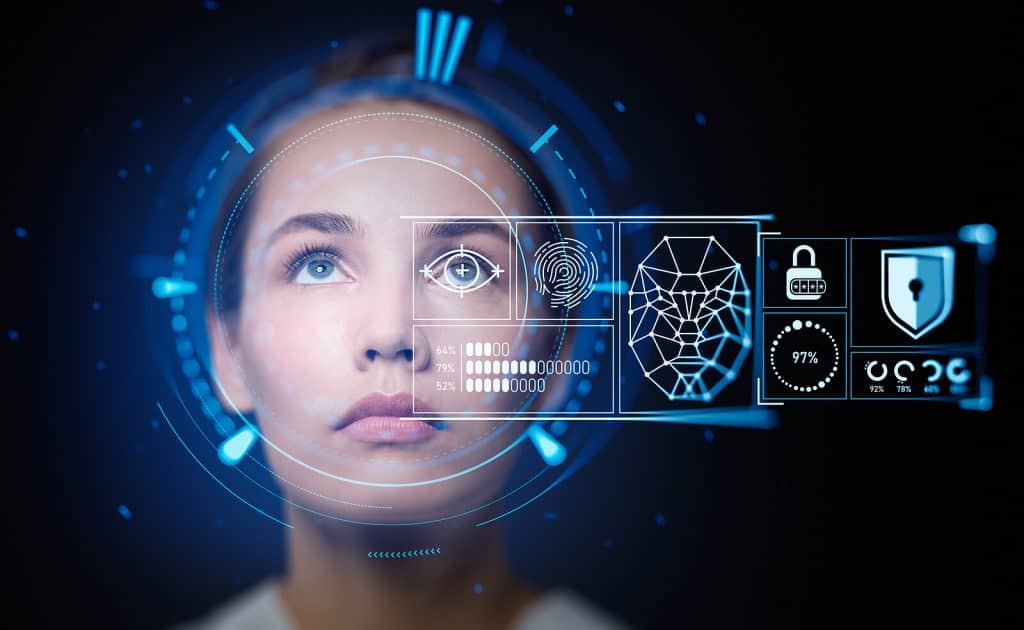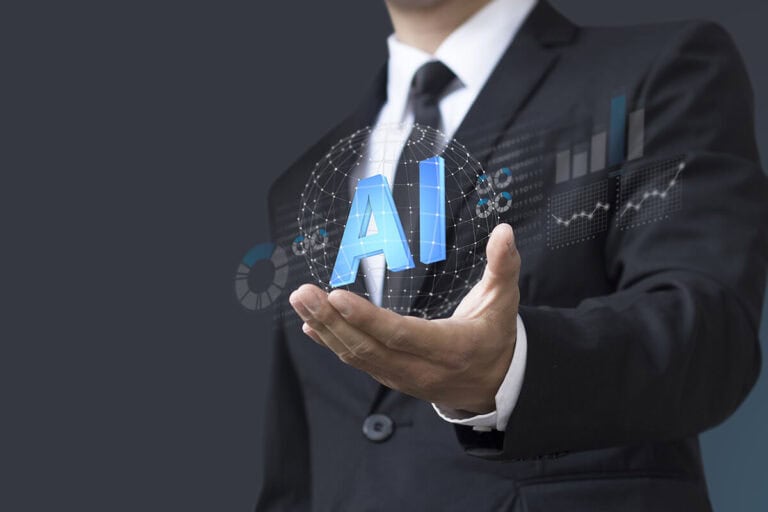What Is Face Recognition?
Face recognition technology allows computers and other devices to recognize, verify, or authenticate individuals based on facial features. This technology utilizes artificial intelligence (AI), machine learning algorithms, and computer vision techniques to process images or videos containing human faces. The system then extracts unique facial features from each detected face and compares them against a database of known faces.
Table of Contents
ToggleFace Recognition Applications
Thanks to AI and machine learning, face recognition technology has become widely adopted in recent years. It has numerous applications across various industries, making it a valuable tool for businesses and organizations worldwide. Some notable applications include:
- Security and surveillance: Face recognition is commonly used to enhance security measures, such as surveillance systems, access control systems, and identity verification.
- Social media platforms: Social media giants like Facebook utilize face recognition algorithms to automatically tag users in photos or suggest friends based on facial similarities.
- Airports and border control: Airports worldwide have begun implementing biometric solutions like face recognition systems for passenger identification during check-in processes or immigration clearance at border checkpoints.
- Banks and financial institutions use AI-powered facial analysis tools to authenticate customers during transactions, reducing fraud risks and streamlining customer service operations.
- Image cropping: Face detection can be used for automatic image cropping. By detecting faces within images, website owners can automatically focus on subjects’ faces when cropping pictures. This makes it possible, for example, to automatically create professional profile pictures based on user-provided images.
Face Recognition with Machine Learning: Two Approaches
AI-powered face recognition technology involves two main steps: data training and analysis.
Convolutional Neural Networks (CNN)
The initial step in face recognition is training the AI model with sample data to recognize different facial features. This typically involves feeding the system thousands or millions of images containing faces from diverse backgrounds, ages, genders, and ethnicities. These images teach the AI about unique facial characteristics, such as eye distance, nose shape, and mouth size.
Modern face recognition systems use Convolutional Neural Networks (CNNs) for improved accuracy and efficiency. CNNs, which consist of multiple layers that can automatically learn complex patterns within input data without manual feature extraction, are employed for pattern detection and classification tasks on large datasets during training phases. As a result, AI can identify intricate details within human faces more accurately than traditional methods. CNNs are computationally intensive, so they are often trained using graphical processing units (GPUs), which are optimized for deep learning tasks.
Face Landmark Analysis
An alternative approach to automatically recognizing faces involves identifying and analyzing landmarks (specific features) within an individual’s face:
- Preprocessing: An incoming image or video frame undergoes preprocessing steps, such as resizing or grayscale conversion, for consistency before further analysis by the AI system.
- Facial landmark detection: Algorithms are used to locate specific regions of interest (ROI), like eyes, nose, and mouth. These ROIs serve as input for feature extraction algorithms that generate a unique numerical representation or “faceprint” of each individual’s face.
- Comparison of faceprint to database: Finally, this faceprint is compared against previously stored templates in the database using similarity measures like Euclidean distance or cosine similarity. If a match is found with a high confidence level threshold met, the system successfully recognizes and identifies the person’s identity based on their facial features alone.
Face Recognition Technologies
Bridging the gap between AI and machine learning algorithms, 2D and 3D face recognition technologies have emerged in recent years.
Two-Dimensional (2D) Face Recognition
In two-dimensional face recognition, AI systems analyze images or video frames to identify facial features by comparing them with a database of known faces. CNNs are typically used in two-dimensional face recognition. One popular open-source library used for 2D face recognition is OpenCV.
Three-Dimensional (3D) Face Recognition
In contrast to 2D methods, three-dimensional face recognition uses depth information from sensors like structured light cameras or time-of-flight sensors. This approach enables the system to create a more accurate representation of the face, making it less susceptible to variations in lighting or pose.
Some popular 3D face recognition technologies include Apple Face ID, Apple’s biometric authentication technology used in its latest iPhones and iPads, and Microsoft Azure Face API, a cloud-based service providing advanced algorithms for detecting, recognizing, and analyzing human faces in images.
AI-Driven Advances in Facial Recognition
The field of facial recognition is experiencing significant progress due to advancements in artificial intelligence (AI). In this section, we’ll explore the AI trends shaping the future of facial recognition.
Federated Learning
Federated learning is a rising trend allowing multiple organizations or devices to collaboratively train a shared model while retaining decentralized data. This approach tackles privacy concerns related to traditional centralized techniques by ensuring sensitive information stays on local devices instead of being transmitted across networks. As more companies embrace federated learning for facial recognition applications, users can anticipate enhanced security and privacy without sacrificing performance.
GANs for Data Augmentation
Generative Adversarial Networks (GANs) are a category of AI algorithms designed to generate synthetic data samples that resemble real-world instances. In facial recognition, GANs can serve as a data augmentation tool, increasing the available training dataset by generating new, lifelike facial images. This method not only boosts model accuracy but also helps address bias and fairness concerns in AI systems.
Emotion Recognition
AI-powered facial recognition extends beyond individual identification to detect emotions and expressions. By examining subtle shifts in facial features, these systems can accurately determine a person’s emotional state. Emotion recognition technology applications encompass customer service, advertising, mental health assessment, and even smart cities.
Edge Computing
Edge computing involves processing data closer to its origin instead of relying on centralized cloud servers. In the realm of AI-enabled facial recognition, edge computing allows for quicker response times and reduced latency while upholding privacy standards by retaining sensitive data locally. As more devices integrate built-in AI functionalities for real-time analysis at the edge, we can anticipate improved performance across various applications.
Conclusion
AI-driven facial recognition is a rapidly evolving technology with numerous applications across diverse industries. In this blog post, we will explore the fundamentals of facial recognition, its functioning, and the technologies involved.
We will also discuss the latest trends in AI-based facial recognition and its potential impact on businesses and society as a whole. As the technology develops, it is expected to become increasingly sophisticated and widespread.
FAQ
A: Face recognition technology is a biometric system that identifies or verifies individuals by analyzing their facial features. AI plays a crucial role in face recognition by enabling the development of advanced algorithms that can detect, research, and compare facial patterns. AI algorithms extract unique facial features, such as the distance between the eyes, the shape of the nose, and facial contours, and use them to create face templates for identification or verification purposes.
A: In face recognition with AI, several technologies are commonly used. These include deep learning, convolutional neural networks (CNNs), and generative adversarial networks (GANs). Deep learning algorithms enable the intuitive understanding of complex facial features, while CNNs effectively extract features from images. GANs can generate new synthetic facial photos, which can be useful in training face recognition models.
A: Some of the latest trends in face recognition technology with AI include improved accuracy and robustness of face recognition algorithms, the integration of facial recognition with other technologies (such as surveillance systems and access control), the development of real-time and mobile face recognition applications, and the incorporation of facial emotion recognition capabilities.
A: Face recognition with AI is being applied in various industries for diverse purposes. Security and law enforcement use it for surveillance, criminal identification, and access control. In banking and finance, it is utilized for secure authentication and fraud prevention. Retail can be employed for personalized marketing and customer experience enhancement. It is also used in healthcare for patient identification and monitoring and in smart homes for customized automation.
A: Face recognition technology raises important privacy and ethical considerations. There are concerns about the collection, storage, and usage of facial data and potential misuse or unauthorized access to this data. Ethical issues include the potential for bias or discrimination, invasions of privacy, and the need for transparency and consent. Organizations and policymakers must address these concerns by implementing robust privacy policies, ensuring data protection, and promoting responsible and ethical use of face recognition technology.





